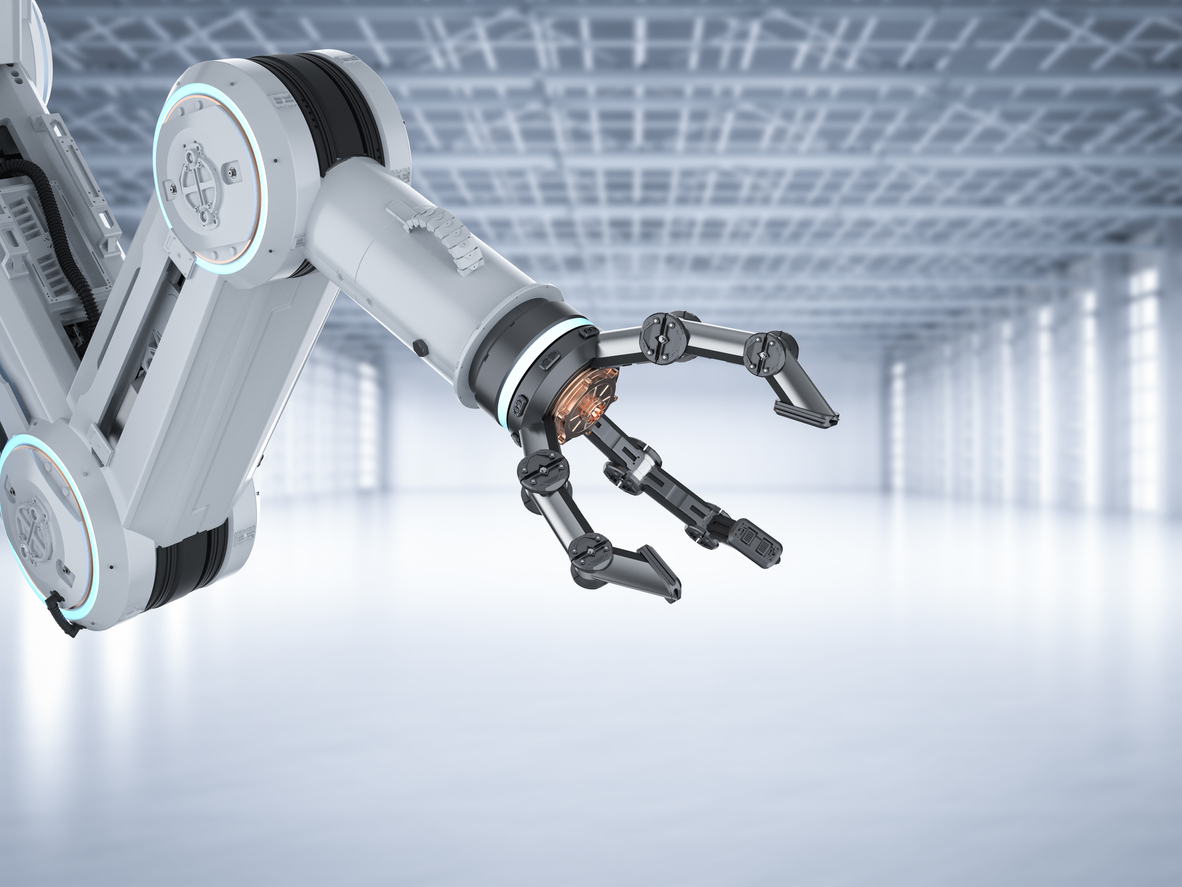Imagine a world where robots seamlessly interact with objects of all shapes and sizes. This critical functionality is powered by the Robotic Grippers Market, a sector dedicated to manufacturing the essential “hands” of robots. Robotic grippers are specialized attachments that enable robots to grasp, lift, manipulate, and precisely position objects. They come in various designs and functionalities, playing a vital role in diverse industrial applications. Driven by rising automation adoption, increasing demand for flexibility in manufacturing, and continuous advancements in gripper technology, the Robotic Grippers Market is experiencing significant growth. Let’s explore the diverse applications of robotic grippers and delve into the exciting trends shaping this dynamic market.
The Grasping Power of Automation: Applications of Robotic Grippers
Robotic grippers are essential for a wide range of tasks across various industries:
- Assembly Lines: Grippers pick and place components with precision, ensuring efficient assembly of products like electronics, automobiles, and consumer goods.
- Material Handling: From loading and unloading machines to palletizing finished products, grippers automate material handling tasks, reducing reliance on manual labor and improving safety.
- Machine Tending: Grippers efficiently load and unload raw materials or finished products into CNC machines and other automated equipment, optimizing production processes.
- Quality Control: Grippers can hold objects for automated inspection systems, enabling efficient quality checks and ensuring product consistency.
- Packaging and Warehousing: Grippers automate the picking, packing, and sorting of goods in warehouses and distribution centers, streamlining logistics operations.
Request a Sample Copy of the Robotic Grippers Market Report: https://www.futuremarketinsights.com/reports/sample/rep-gb-7604
A Market Grasping Opportunity: Growth Drivers in Robotic Grippers
The Robotic Grippers Market is experiencing a surge in popularity driven by several key trends:
- Rising Automation Adoption: The growing trend towards automation in manufacturing processes across various industries creates a strong demand for robotic grippers as a crucial component of robotic systems.
- Demand for Flexibility: Manufacturing environments are becoming more dynamic, requiring robots to handle diverse objects and tasks. Advanced grippers with adaptable designs and intelligent control systems cater to this need for flexibility.
- Advancements in Gripper Technology: Continuous innovation in areas like material science, sensor technology, and control systems is leading to the development of more sophisticated grippers with improved gripping force, dexterity, and adaptability.
- Focus on Efficiency and Productivity: Robotic grippers enable robots to perform tasks faster and more precisely, leading to increased production efficiency and improved overall throughput within factories.
- Reduced Labor Costs: Automating tasks with robotic grippers can reduce reliance on manual labor, potentially leading to cost savings in the long run.
The robotic grippers market is estimated to secure a valuation of USD 1.7 Billion in 2023 and is projected to reach USD 4.3 Billion by 2033. The market is estimated to thrive at a CAGR of 9.4% during the forecast period.

Challenges to Consider: Keeping a Firm Grip on the Future
Despite the promising outlook, the Robotic Grippers Market faces some hurdles:
- Matching Gripper Selection to Application Needs: Choosing the right gripper type and size for a specific application is crucial for optimal performance and avoiding damage to objects.
- Integration with Existing Robotic Systems: Ensuring seamless integration of grippers with different robotic arms and control systems requires careful planning and compatibility checks.
- High-Precision Requirements: Certain applications demand extremely precise gripping for delicate objects, which can pose a challenge for some gripper designs.
- Cost Considerations: While offering long-term benefits, the upfront investment cost of robotic gripper systems can be a barrier for some manufacturers, particularly small and medium-sized enterprises.
Get Full Report Now: https://www.futuremarketinsights.com/checkout/7604




